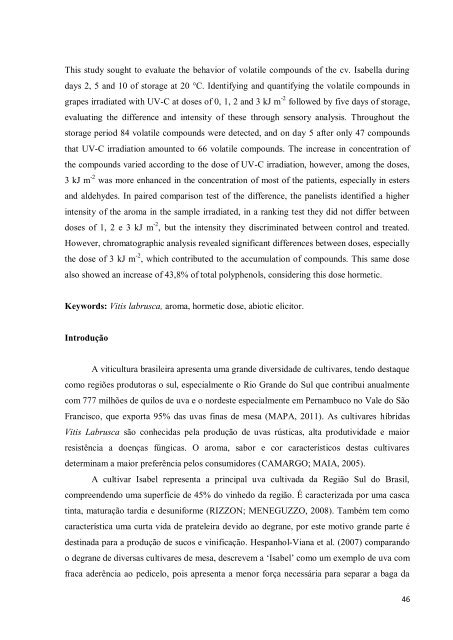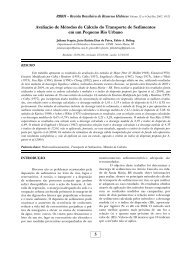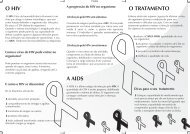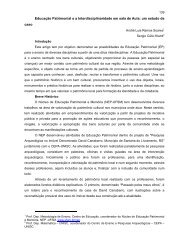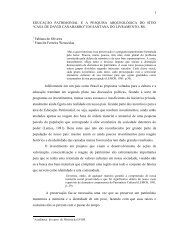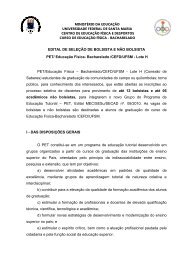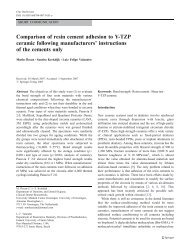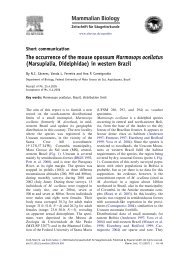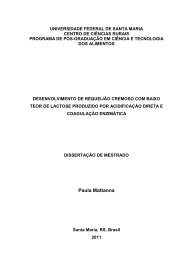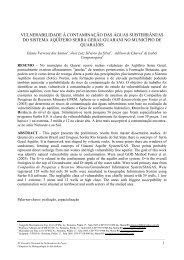Taísa Ceratti Treptow - UFSM
Taísa Ceratti Treptow - UFSM
Taísa Ceratti Treptow - UFSM
Create successful ePaper yourself
Turn your PDF publications into a flip-book with our unique Google optimized e-Paper software.
This study sought to evaluate the behavior of volatile compounds of the cv. Isabella during<br />
days 2, 5 and 10 of storage at 20 °C. Identifying and quantifying the volatile compounds in<br />
grapes irradiated with UV-C at doses of 0, 1, 2 and 3 kJ m -2 followed by five days of storage,<br />
evaluating the difference and intensity of these through sensory analysis. Throughout the<br />
storage period 84 volatile compounds were detected, and on day 5 after only 47 compounds<br />
that UV-C irradiation amounted to 66 volatile compounds. The increase in concentration of<br />
the compounds varied according to the dose of UV-C irradiation, however, among the doses,<br />
3 kJ m -2 was more enhanced in the concentration of most of the patients, especially in esters<br />
and aldehydes. In paired comparison test of the difference, the panelists identified a higher<br />
intensity of the aroma in the sample irradiated, in a ranking test they did not differ between<br />
doses of 1, 2 e 3 kJ m -2 , but the intensity they discriminated between control and treated.<br />
However, chromatographic analysis revealed significant differences between doses, especially<br />
the dose of 3 kJ m -2 , which contributed to the accumulation of compounds. This same dose<br />
also showed an increase of 43,8% of total polyphenols, considering this dose hormetic.<br />
Keywords: Vitis labrusca, aroma, hormetic dose, abiotic elicitor.<br />
Introdução<br />
A viticultura brasileira apresenta uma grande diversidade de cultivares, tendo destaque<br />
como regiões produtoras o sul, especialmente o Rio Grande do Sul que contribui anualmente<br />
com 777 milhões de quilos de uva e o nordeste especialmente em Pernambuco no Vale do São<br />
Francisco, que exporta 95% das uvas finas de mesa (MAPA, 2011). As cultivares híbridas<br />
Vitis Labrusca são conhecidas pela produção de uvas rústicas, alta produtividade e maior<br />
resistência a doenças fúngicas. O aroma, sabor e cor característicos destas cultivares<br />
determinam a maior preferência pelos consumidores (CAMARGO; MAIA, 2005).<br />
A cultivar Isabel representa a principal uva cultivada da Região Sul do Brasil,<br />
compreendendo uma superfície de 45% do vinhedo da região. É caracterizada por uma casca<br />
tinta, maturação tardia e desuniforme (RIZZON; MENEGUZZO, 2008). Também tem como<br />
característica uma curta vida de prateleira devido ao degrane, por este motivo grande parte é<br />
destinada para a produção de sucos e vinificação. Hespanhol-Viana et al. (2007) comparando<br />
o degrane de diversas cultivares de mesa, descrevem a ‗Isabel‘ como um exemplo de uva com<br />
fraca aderência ao pedicelo, pois apresenta a menor força necessária para separar a baga da<br />
46


